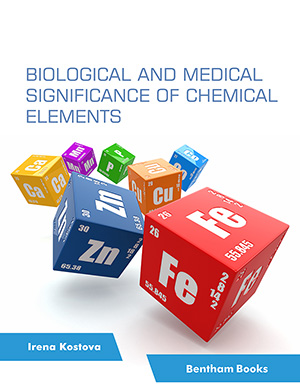Abstract
Objective: Mentha pulegium L., an aromatic plant belonging to Lamiaceae family, is widely used by local population against diabetes, hypertension and cardiovascular disorders. The present study aimed to evaluate the in vivo antihypercholesterolemic effect of aerial parts aqueous extract (A.P.A.E) of Mentha pulegium (M. pulegium) in normal and streptozotocin-induced diabetic rat. Additionally, the in vitro antioxidant activity of M. pulegium A.P.A.E has been estimated.
Methods: The effect of M. pulegium (L.) A.P.A.E (20 mg of lyophilized A.P.A.E per kg body weight) on plasma lipid profile was investigated in normal and streptozotocin (STZ) diabetic rats (n=6) treated for 15 days with M. pulegium (L.) A.P.A.E oral administration. The antioxidant activity was evaluated using DPPH (1-1-diphenyl 2-picryl hydrazyl) radical scavenging activity. Estimation of total polyphenol contents in A.P.A.E of M. pulegium was determined with the Folin- Ciocalteu reagent by the method using gallic acid as a standard phenolic compound. Also, flavonoids were estimated according to the method based on the formation of a complex flavonoidaluminium.
Results: The results show that 15 days of M. pulegium A.P.A.E oral administration alleviated hyperlipidemia in diabetic rats by lowering significantly (p<0.01) the plasma cholesterol levels without affecting the triglycerides (TG) levels significantly. However, no significant decrease in plasma cholesterol and plasma triglycerides has been shown in diabetic control rats. In addition, A.P.A.E oral administration has exerted some increasing activity on plasma HDL-c level (54.84 %), whereas the HDL-c level, in diabetic control rats, has significantly decreased (p<0.05). On the other hand, M. pulegium A.P.A.E showed a high amount of flavonoid (83.07 ± 0.58 mg EQ / g of extract) and phenolic compounds (239.08 ± 35.40 mg EAG/g of extract). Also, according to the DPPH radical scavenging activity, this aqueous extract has demonstrated a significant antioxidant activity.
Conclusion: We conclude that 15 days of M. pulegium A.P.A.E oral administration exhibited a significant antihypercholesterolemic effect and has also demonstrated a not negligent increase in HDL-c levels without affecting the triglycerides levels. Furthermore, A.P.A.E exhibited a potent antioxidant activity. Therefore, phytochemical compounds and antioxidant activity of M. pulegium A.P.A.E may be seemingly implicated in the antihypercholesterolemic effect demonstrated in this study.
Keywords: Mentha pulegium (L.), antihypercholesterolemic, antioxidant activity, flavonoids, phenolic compounds, cardiovascular diseases (CVDs).
[http://dx.doi.org/10.3748/wjg.v12.i40.6429] [PMID: 17072974]
[http://dx.doi.org/10.4158/EP171764.APPGL] [PMID: 28437620]
[http://dx.doi.org/10.2174/2212798410901010015] [PMID: 20653522]
[http://dx.doi.org/10.1016/S0300-483X(02)00048-3] [PMID: 11985890]
[http://dx.doi.org/10.2174/1871525716666180103163107] [PMID: 29299990]
[http://dx.doi.org/10.1016/S0378-8741(02)00366-5] [PMID: 12639741]
[http://dx.doi.org/10.1016/S0378-8741(02)00164-2] [PMID: 12241983]
[http://dx.doi.org/10.1016/j.joim.2018.03.003] [PMID: 29631911]
[http://dx.doi.org/10.2174/2210315507666170927163450]
[http://dx.doi.org/10.1007/s10298-015-0999-y]
[http://dx.doi.org/10.1016/S0308-8146(98)00102-2]
[http://dx.doi.org/10.1016/S0006-2952(98)00128-2] [PMID: 9698075]
[http://dx.doi.org/10.1016/j.foodchem.2008.06.026]
[http://dx.doi.org/10.1016/S0140-6736(68)91094-5] [PMID: 4176174]
[http://dx.doi.org/10.1016/j.jep.2012.07.006] [PMID: 22842651]
[http://dx.doi.org/10.1016/j.eujim.2009.12.001]
[http://dx.doi.org/10.4093/dmj.2015.39.5.353] [PMID: 26566492]
[http://dx.doi.org/10.1016/S0378-8741(02)00077-6] [PMID: 12065151]
[http://dx.doi.org/10.1016/j.cbi.2009.08.012] [PMID: 19695236]
[http://dx.doi.org/10.1089/jmf.2009.1320] [PMID: 20553191]
[http://dx.doi.org/10.1016/S0167-7306(08)60681-X]
[http://dx.doi.org/10.1021/jm00382a001] [PMID: 3981532]
[PMID: 7217780]
[PMID: 6630210]
[http://dx.doi.org/10.1016/S0016-5085(82)80019-X] [PMID: 7106517]
[http://dx.doi.org/10.1016/0005-2760(79)90028-6] [PMID: 508786]
[http://dx.doi.org/10.1016/S0928-4680(03)00002-6] [PMID: 14567929]
[http://dx.doi.org/10.1016/j.jep.2007.09.029] [PMID: 18023310]
[http://dx.doi.org/10.1016/j.fitote.2007.11.005] [PMID: 18191910]
[http://dx.doi.org/10.1254/jphs.FP0061244] [PMID: 17380035]
[http://dx.doi.org/10.1248/bpb.28.1782] [PMID: 16141561]
[PMID: 16401396]
[http://dx.doi.org/10.1016/j.apsb.2015.01.001] [PMID: 26579438]
[http://dx.doi.org/10.4314/ahs.v14i1.32] [PMID: 26060481]
[http://dx.doi.org/10.1016/S0021-9150(01)00651-7] [PMID: 11882312]
[http://dx.doi.org/10.1161/01.RES.0000170946.56981.5c] [PMID: 15976321]
[http://dx.doi.org/10.1016/j.jep.2006.03.032] [PMID: 16713156]
[http://dx.doi.org/10.1016/S0367-326X(02)00174-0] [PMID: 12385866]
[http://dx.doi.org/10.1155/2016/5264064] [PMID: 26885249]
[http://dx.doi.org/10.1016/j.foodchem.2007.04.038]
[PMID: 11121513]
[http://dx.doi.org/10.1016/S0014-5793(97)01182-4] [PMID: 9369196]
[http://dx.doi.org/10.1016/0006-2952(92)90478-2] [PMID: 1329770]
[http://dx.doi.org/10.3177/jnsv.47.357] [PMID: 11814152]
[http://dx.doi.org/10.1021/np970237h] [PMID: 9461655]
[http://dx.doi.org/10.1016/S0140-6736(05)65927-2] [PMID: 8942794]
[PMID: 10488973]
[http://dx.doi.org/10.1016/0006-2952(90)90120-A]
[http://dx.doi.org/10.1016/0006-2952(92)90562-W] [PMID: 1540202]
[http://dx.doi.org/10.1093/ecam/nem091] [PMID: 18955232]
[http://dx.doi.org/10.1016/j.lfs.2004.04.056] [PMID: 15519360]





























